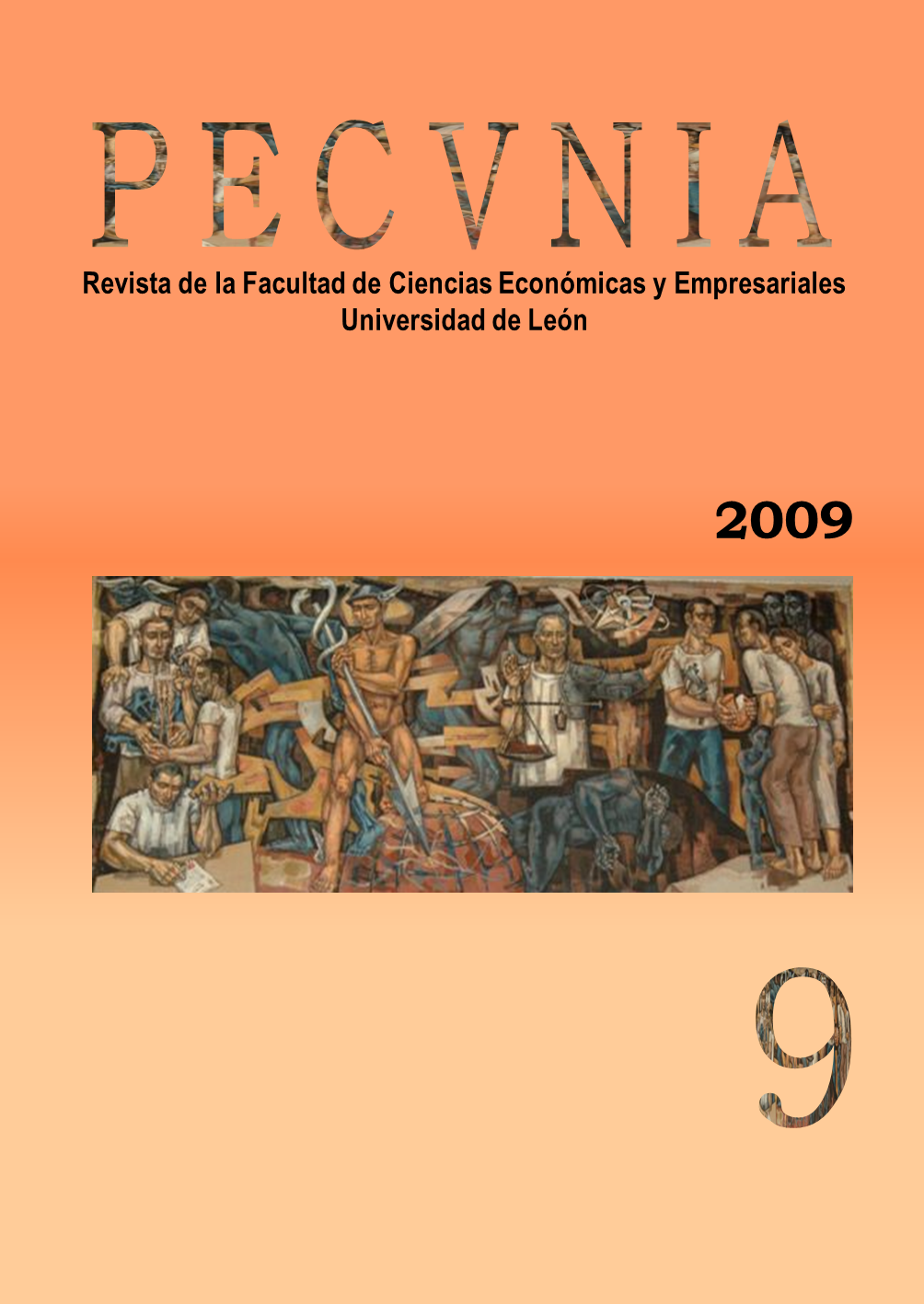Marco conceptual de una cultura sistémica en las redes virtuales de fabricación global
DOI:
https://doi.org/10.18002/pec.v0i9.670Palabras clave:
Redes virtuales de fabricación global, Cultura interempresarial, Industria aeronáutica, Global manufacturing virtual networks, Inter-company culture, Aeronautic industryResumen
En este trabajo se analizan los factores más relevantes de la cultura organizacional que aparecen en las Redes Virtuales de Fabricación Global (RVFG). Estas organizaciones están formadas por empresas muy dinámicas que fabrican todo tipo de productos o servicios, las cuales establecen entre sí relaciones de tipo horizontal y vertical, pudiendo incluso ser competidores, donde no es necesario mantener internamente grandes recursos fabriles sino gestionar y compartir eficientemente los recursos de la red. El estudio de la cultura organizacional a nivel de red incluye aspectos como la similitud de las prácticas culturales entre sus actores, la integración social, la transferencia de conocimiento tácito o la importancia de la confianza en la red. Son, en definitiva, los aspectos blandos o "soft factors" de las RVFGs y constituyen uno de los aspectos fundamentales en el funcionamiento eficiente de las mismas. Mediante el modelo teórico propuesto se analizarán todos los factores culturales relevantes en las colaboraciones interempresariales, así como la posible existencia de una cultura organizacional a nivel de red. La presencia, bajo una perspectiva sistémica, de unos valores y prácticas culturales homogéneas en las que se puedan identificar los actores de la red permitiría fortalecer la pertenencia al grupo o establecer una red social que subyaga a la propia RVFG y que facilite e incremente las interacciones entre sus miembros. La factibilidad de este planteamiento facilitaría la formación de nuevas RVFGs al poder establecer, ex ante, un modelo prescriptivo cultural a nivel de red. Finalmente, para validar el modelo propuesto, se aplicará la metodología del caso a un ejemplo de la industria aeronáutica que ha constituido una de las relaciones con más éxito dentro de las RVFGs, la colaboración entre GE y SNECMA para la fabricación del motor CFM 56.This paper analyzes the most relevant factors of organizational culture that appear in the global manufacturing virtual network (GMVN). These organizations are formed by very dynamic companies that manufacture all types of products or services, which establish horizontal and vertical relations among themselves, in some cases between direct competitors, where it is not necessary to maintain large internal manufacturing resources but manage and share these resources efficiently in the network. The study of organizational culture at the network level includes aspects such as cultural similarity among its actors, social embeddedness, tacit knowledge transfer or the importance of trust in the network. They are ultimately the soft factors of GMVNs and represent one of the key aspects for the efficient operation thereof. The proposed theoretical model will permit to analyze all relevant cultural factors in inter-company collaborations, as well as the possible existence of an organizational culture at the network level. The presence, under a systemic perspective, of homogeneous cultural values and practices in which network actors can be identified would strengthen the group membership or would establish a social network that underlies the own GMVN and facilitates interactions among its members. The feasibility of this approach would facilitate the formation of new GMVNs by establishing, ex ante, a cultural prescriptive model at the network level. Finally, to validate the proposed model, the case methodology will be applied to an example within the aeronautical industry that has been one of the most successful relationships within GMVNs, the collaboration between GE and SNECMA for the CFM 56 engine manufacturing.
Descargas
Citas
AHUJA, G. (2000) "Collaboration Networks, Structural Holes, and Innovation: A Longitudinal Study", Administrative Science Quarterly, 45, No. 3 (Sep.), pp. 425-455.
BARMEYER, C. y U. MAYRHOFER (2008) "The Contribution of Intercultural Management to the Success of International Mergers and Acquisitions: An Analysis of the EADS Group", International Business Review, 17, pp. 28–38.
BROWN, L.; A. RUGMAN y A. VERBEKE (1988) "Japanese Joint Ventures with Western Multinationals: Synthesizing the Economic and Cultural Explanations of Failure", Journal of Pacific Asian Management, 6, pp. 225-242.
BURT, R. (1992) Structural Holes: The Social Structure of Competition. Cambridge, MA: Harvard University Press.
CAMARINHA-MATOS, L.M.; H. AFSARMANESH, N. GALEANO & A. MOLINA (2009) "Collaborative Networked Organizations – Concepts and Practice in Manufacturing Enterprises", Computers & Industrial Engineering, 57, pp. 46-60.
CARROLL, G.R. & A.C. TEO (1996) "On the Social Networks of Managers", Academy of Management Journal, 37, pp. 869-898.
CARTWRIGHT, Susan & L.C. COOPER (1993) "The Role of Culture Compatibility in Successful Organizational Marriage", Academy of Management Executive, 7 (2), pp. 57-70.
CHEN, X.P. & X. YAO (2003) "Sustaining Cooperation in Public Goods Dilemmas: Effects of Motivational Explanations and Sanctions", Paper presented at the Annual Meeting of the Academy of Management. Seattle.
CHITUC, C.M.; C. TOSCAZO & A. AZEVEDO (2008) "Interoperability in Collaborative Networks: Independent and Industry-Specific Initiatives – The case of the Footwear Industry", Computers in Industry, 59, pp. 741–757.
COHEN, W.M. & D.A. LEVINTHAL (1990) "Absorptive Capacity: A New Perspective on Learning and Innovation", Administrative Science Quarterly, 35, pp. 128-152.
DEAL, T.E. & A.A. KENNEDY (1982) Corporate Cultures: The Rites and Rituals of Corporate Life. Reading, Mass.: Addison-Wesley Publishing Company.
DHANARAJ, C.; M.A. LYLES, H.K. STEENSMA & L. TIHANYI (2002) "Managing Tacit and Explicit Knowledge Transfer in IJVs: The Role of Relational Embeddedness and the Impact on Performance", Journal of International Business Studies, 35, No. 5, pp. 428-442.
DIETER, E. (2002) "Global Production Networks, Knowledge Diffusion, and Local Capability Formation", Research Policy, 31, Nos. 8-9, pp. 1,417- 1,429.
DOZ, Yves L. (1996) "The Evolution of Cooperation in Strategic Alliances: Initial Conditions or Learning Processes?", Strategic Management Journal, 17 (Summer), pp. 55-83.
DOZ, Yves L. & G. HAMEL (1998) Alliance Advantage: The Art of Creating Value Through Partnering. Boston: Harvard Business School Press.
DUSSAUGE, P. & B. GARRETTE (1995) "Determinants of Success in International Strategic Alliances: Evidence from the Global Aerospace Industry", Journal of International Business Studies, 26, No. 3, pp. 505-530.
FICHMAN, M. & D.A. LEVINTHAL (1991) "Honeymoons and the Liability of Adolescence: A New Perspective on Duration Dependence in Social and Organizational Relations", Academy of Management Review, 16, pp. 442-468.
GRANOVETTER, M. (1985) "Economic Action and Social Structure: The Problem of Embeddedness", The American Journal of Sociology, 91, No. 3, pp. 481-510.
GULATI, R. (1995) "Does Familiarity Breed Trust? The Implications of Repeated Ties for Contractual Choice in Alliances", The Academy of Management Journal, 38, No. 1, pp. 85-112.
GULATI, R. y M. GARGIULO (1999) "Where Do Interorganizational Networks Come From?", The American Journal of Sociology, 104, No. 5, pp. 1439-1493.
GUPTA, A.K. & V. GOVINDARAJAN (2000) "Knowledge Flows within Multinational Corporations", Strategic Management Journal, 21, No. 4, Abril, pp. 473-496.
HOFSTEDE, G.; B. NEUIJEN, D. OHAYV & G. SANDERS (1990) "Measuring
Organizational Cultures: A Qualitative and Quantitative Study Across Twenty Cases", Administrative Science Quarterly, 35, No. 2, June, pp. 286-316.
KOGUT, B. (1988) "Joint Ventures: Theoretical and Empirical Perspectives", Strategic Management Journal, 9, pp. 319-332.
LANE, P.; J. SALK & M. LYLES (2001) "Absorptive Capacity, Learning, and Performance in International Joint Ventures", Strategic Management Journal, 22, pp. 1139-1161.
LARSSON, R.; L. BENGTSSON, K. HENRIKSSON & J. SPARKS (1998) "The Interorganizational Learning Dilemma: Collective Knowledge Development in Strategic Alliances", Organization Science, 9, No. 3, Special Issue: Managing Partnerships and Strategic Alliances (May - Jun.), pp. 285-305.
LEWIS, J.D. (1990) Partnerships for Profit: Structuring and Managing Strategic Alliances. New York: The Free Press.
LI, R.; T. YU & M. FANG (2004) "The Reliability Management of Manufacturing Grid", Flexible Automation and Intelligent Manufacturing (FAIM2004), Toronto, Canada.
LIU, Q. & Y.J. SHI (2008) "Grid Manufacturing for Cross-Enterprise", International Journal of Advanced Manufacturing Technology, 36, pp. 205–212.
LUO, Y. (2001) "Antecedents and Consequences of Personal Attachment in Cross-Cultural Cooperative Ventures", Administrative Science Quarterly, 46, No. 2, pp. 177-201.
MADHOK, A. (1995) "Revisiting Multinational Firms' Tolerance for Joint Ventures: A Trust-Based Approach", Journal of International Business Studies, 26, No. 1, pp. 117-137.
MATTA, R.K. (1992) "A Role Model for International Alliances", Indian International Aviation Congress. Bombay.
MAYO, E. (1933) The Human Problems of an Industrial Civilization. New York: MacMillan.
NALEBUFF, B.J. & A.M. BRANDENBURGER (1996) La competition, une révolution dans la manière de jouer concurrence et cooperation. Paris: Village Mondial.
PARK, S.K. & G.R. UNGSON (2001) "Interfirm Rivalry and Managerial Complexity: A Conceptual Framework of Alliance Failure", Organization Science, 12, No. 1, January-February, pp. 37-53.
PARK, S.K. & G. UNGSON (1997) "The Effect of Partner Nationality, Organizational Dissimilarity, and Economic Motivation on the Dissolution of Joint Ventures", Academy of Management Journal, 39, pp. 279-307.
PARKHE, A. (1993) "The Structuring of Strategic Alliances: A Game- Theoretic and Transaction-Cost Examination of Interfirm Cooperation", Academy of Management Journal, 36, pp. 794-829.
PETTIGREW, Andrew M. (1979) "On studying Organizational Cultures", Administrative Science Quarterly, 24, pp. 570-581.
PORTER, M. (1996) "What is Strategy?", Harvard Business Review, November– December.
POTHUKUCHI, V.; F. DAMANPOUR, J. CHOI, C.C. CHEN & S.H. PARK (2002) "National and Organizational Culture Differences and International Joint Venture Performance", Journal of International Business Studies, 33, pp. 243-265.
SCHEIN, E.H. (1985) Organizational Culture and Leadership. San Francisco: Jossey Bass.
SHAPIRO, D.L.; B.H. SHEPPARD & L. CHERASKIN (1992) "In Theory: Business on a Handshake", Negotiation Journal, 8, pp. 365-377.
SHI, Y.; D. FLEET & M. GREGORY (2005) "Global Manufacturing Virtual Network and its Position in Manufacturing Systems". The 7th Annual International Manufacturing Symposium. University of Cambridge: Institute for Manufacturing, Dept. of Engineering.
SHI, Y. & M. GREGORY (2003) "From Original Equipment Manufacturers to Total Solution Providers: An Emergence of Global Manufacturing Virtual Network in Electronics Industry", International Journal of Service Technology and Management, 4, Nos. 4-6, pp. 331-346.
STEENSMA, K. & M. LYLES (2000) "Explaining IJV Survival in a Transitional Economy Through Social Exchange and Knowledge-Based Perspectives", Strategic Management Journal, 21(8), pp. 831-852.
STURGEON, J. (2002) "Modular Production Networks: A New American Model of Industrial Organization", Industrial and Corporate Change, 11, No. 3, pp. 451-496.
TRICE, H.M. & J.M. BEYER (1993) The Cultures of Work Organizations. Englewood Cliffs, New Jersey: Prentice-Hall.
UZZI, B. (1997) "Social Structure and Competition in Interfirm Networks: The Paradox of Embeddedness", Administrative Science Quarterly, 42, pp. 35-67.
VAN DE VEN, A.H. (1993) "The Institutional Theory of John R. Commons: A Review and Commentary", Academy of Management Review, 18, pp. 139-152.
VILANA, J.R. & C. RODRÍGUEZ (2009) "Strategic Positioning of Global Manufacturing Virtual Networks in the Aeronautical Industry", Intangible Capital, 5, No. 2 Abril, pp. 152-168.
WILLIAMSON, O.E. (1991) "Comparative Economic Organization: The Analysis of Discrete Structural Alternatives", Administrative Science Quarterly, 36, pp. 269-296.
WILLIAMSON, O.E. (1985; 1991) The Economics Institutions of Capitalism. New York: Free Press. Traducción: Las Instituciones Económicas del Capitalismo. México: FCE.
YIN, R.K. (1994) Case Study Research: Design and Methods. Thousand Oaks, CA: Sage Publications.
ZENG, M. & X.P. CHEN (2003) "Achieving Cooperation in Multiparty Alliances: A Social Dilemma Approach to Partnership Management", The Academy of Management Review, 28, No. 4, pp. 587-605.
ZUCKER, L.G. (1986) "Production of Trust: Institutional Sources of Economic Structure 1840-1920". B.M. STAW & L.L. CUMMINGS (eds.) Research in organizational behaviour. Greenwich, CT: JAI Press, 8, pp. 53-111.
Descargas
Publicado
Cómo citar
Número
Sección
Licencia
Derechos de autor 2009 José Ramón Vilana Arto, Carlos Rodríguez Monroy

Esta obra está bajo una licencia internacional Creative Commons Atribución-NoComercial-CompartirIgual 4.0.
Los autores que publican en esta revista están de acuerdo con los siguientes términos:- Los autores ceden de forma no exclusiva los derechos de explotación (reproducción, distribución, comunicación pública, transformación) a la Universidad de León, por lo que pueden establecer, por separado, acuerdos adicionales para la distribución no exclusiva de la versión de la obra publicada en la revista (por ejemplo, alojarlo en un repositorio institucional o publicarlo en un libro), con un reconocimiento de su publicación inicial en esta revista.
- Este trabajo se encuentra bajo la Creative Commons Attribution-NonCommercial-ShareAlike 4.0 International License. Puede consultarse desde aquí la versión informativa y el texto legal de la licencia.
- Se permite y se anima a los autores a difundir electrónicamente las versiones pre-print (versión antes de ser evaluada) y/o post-print (versión evaluada y aceptada para su publicación) de sus obras antes de su publicación, ya que favorece su circulación y difusión más temprana y con ello un posible aumento en su citación y alcance entre la comunidad académica.












